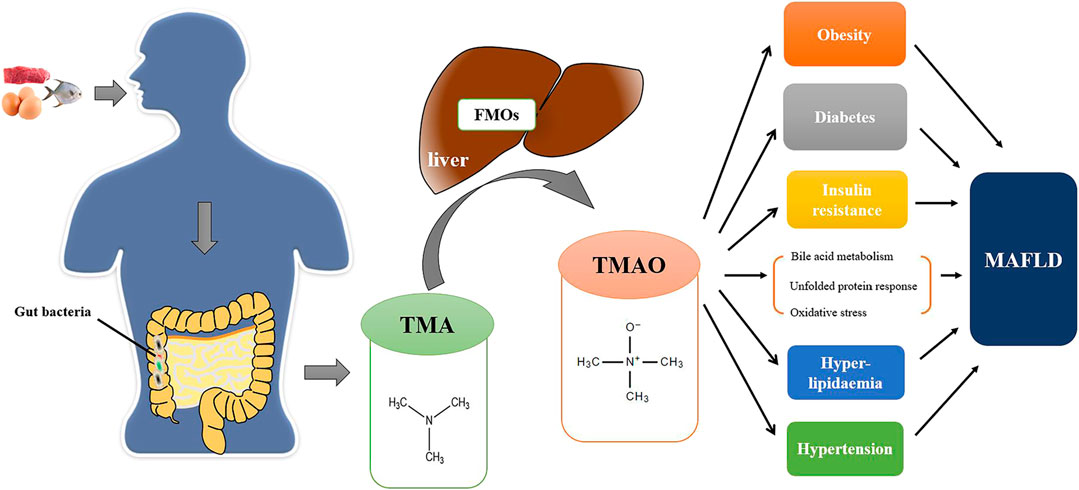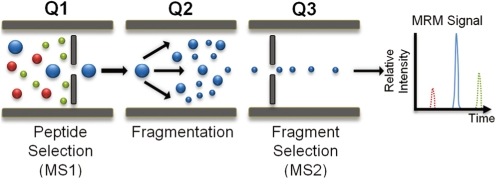MRM-Based Targeted Metabolomics - Comprehensive TMAO Metabolite Analysis Service
- Initial conditions: B solvent (acetonitrile) at 90% for the first 1.5-4.5 minutes.
- Gradual elution changes: B solvent gradually reduces to 85% between 7.5-10 minutes and further decreases to 50% at 10.5 minutes, ensuring complete separation of TMAO from other metabolites.
- Source temperature: 550°C
- Ion source gas flows: Gas1 (55), Gas2 (55)
- Collision energy settings: Tailored for each targeted ion to maximize sensitivity.
- Plasma, Serum, Urine: At least 50 µL is required per sample.
- Tissue: Minimum of 50 mg for optimal extraction and analysis. Samples should be stored and shipped on dry ice to preserve stability, and prepared according to our guidelines for best results.
Trimethylamine-N-oxide (TMAO), a significant metabolite formed by the oxidation of trimethylamine (TMA), is increasingly recognized for its pivotal role in human health. TMA itself is a product of gut microbial metabolism, primarily synthesized from dietary components such as choline, betaine, and carnitine. These substances are abundant in foods like fish, red meat, and dairy products. Upon entering the liver, TMA undergoes oxidation to produce TMAO. Recent scientific studies have highlighted the strong associations between elevated levels of TMAO and a range of chronic diseases, including cardiovascular disease, chronic kidney disease, diabetes, and even certain cancers. Due to its emerging importance as a biomarker, the precise quantification of TMAO and its related metabolites is crucial for understanding disease mechanisms, diagnostics, and therapeutic evaluations. Accurate TMAO measurement also provides valuable insight into the intricate relationship between gut microbiota and host metabolism.

The TMAO Pathway in the Pathogenesis of MAFLD(Li, X. et. al. Front Mol Biosci. 2021.)
MRM Principle for TMAO Quantification
Multiple Reaction Monitoring (MRM), a highly specific and sensitive mass spectrometry (MS/MS) technique, is the core analytical tool utilized for the targeted quantification of TMAO metabolites. This technique offers several advantages:
✔️ Targeted Quantification
MRM allows for the precise detection of TMAO by monitoring specific ion transitions associated with the metabolite. By using labeled internal standards, it ensures highly accurate and reproducible quantification.
✔️ High Sensitivity and Selectivity
The technique efficiently distinguishes TMAO from other interfering compounds in complex biological matrices, reducing background noise. This results in cleaner spectra and enhanced detection sensitivity.
✔️ Minimization of Ion Interference
MRM monitors the fragmentation patterns of the parent ion (precursor) and the product ion, significantly reducing matrix-related interference. This makes it ideal for clinical and pharmacological studies where precision and sensitivity are paramount.

By leveraging MRM, our targeted metabolomics service achieves exceptional accuracy in the quantification of TMAO and its derivatives, facilitating high-quality, reproducible research results.
Analysis Workflow
At MtoZ Biolabs, we follow a rigorous and optimized workflow to ensure precise and reproducible TMAO metabolite analysis. Our workflow includes the following steps:

1. Sample Preparation
Samples are carefully handled and prepared under strict conditions to maintain metabolite integrity. Our sample preparation process includes:
(1) Extraction: Biological samples (plasma, serum, urine, tissue, etc.) are stored at -80°C. Metabolites are extracted using organic solvents and centrifuged to separate the supernatant.
(2)Concentration and Drying: The supernatant is dried under nitrogen or vacuum to concentrate the metabolites.
(3)Reconstitution: The dried samples are reconstituted with mobile phase solvents for LC-MS/MS analysis.
2. LC-MS/MS Analysis
(1) Chromatography: The prepared samples are injected into an Agilent 1290 Infinity UHPLC system for separation. We employ an optimized gradient elution profile to achieve maximum separation efficiency. This includes:
(2) Mass Spectrometry Detection: The separated compounds are then subjected to tandem mass spectrometry using the 5500 QTRAP mass spectrometer (AB SCIEX). Key parameters include:
3. MRM Detection
The MRM mode is specifically designed to monitor ion transitions of TMAO and its derivatives. By tracking specific ion pairs (precursor ion → product ion), MRM ensures that only TMAO-related signals are detected, minimizing background noise from other matrix components. This selective monitoring of ion transitions provides clear, high-resolution data for TMAO quantification.
4. Data Processing and Analysis
After data acquisition, comprehensive analysis is performed using the industry-standard MultiQuant™ software. Our data processing includes:
(1) Quantitative Data Analysis: The absolute concentration of TMAO is calculated by comparing the intensity of the target ions to the internal standard.
(2) Data Reporting: Results are formatted into customized Excel reports, providing clients with detailed quantitative data. We also offer graphical representation of the chromatographic separation and MRM transitions to enhance result interpretation.
(3) Result Validation: Each analysis undergoes rigorous validation to ensure precision, accuracy, and reproducibility.
Advantages of MtoZ Biolabs' TMAO Metabolite Analysis Service
High Sensitivity and Accuracy: Our MRM-based approach ensures precise quantification of TMAO even at trace levels, offering superior detection limits.
✅ Comprehensive Metabolite Profiling
In addition to TMAO, we provide analysis of related metabolites, enabling a broader understanding of metabolic pathways.
✅ Cutting-Edge Technology
Our laboratory utilizes state-of-the-art LC-MS/MS platforms, ensuring reliable, high-throughput analysis with quick turnaround times.
✅ Expert Support
With years of experience in metabolomics and mass spectrometry, our team of experts provides in-depth data interpretation and personalized technical support to meet specific research needs.
Sample Submission Requirements
We accept a variety of biological sample types, including:
Applications
Our MRM-based TMAO metabolite analysis service is suitable for a wide range of research areas, including:
1. Cardiovascular and Kidney Disease Research: Investigate the role of TMAO as a biomarker in disease progression and treatment efficacy.
2. Gut Microbiota Studies: Explore the metabolic interactions between gut microbiota and host health.
3. Nutritional and Dietary Studies: Analyze the impact of dietary components on TMAO production and its physiological implications.
4. Pharmacological Research: Monitor changes in TMAO levels in response to drug interventions or therapeutic strategies.
At MtoZ Biolabs, our cutting-edge TMAO analysis service delivers high-quality, reproducible data, helping researchers make critical insights into metabolic processes and disease mechanisms. Contact us to learn how our service can support your research objectives.
How to order?







